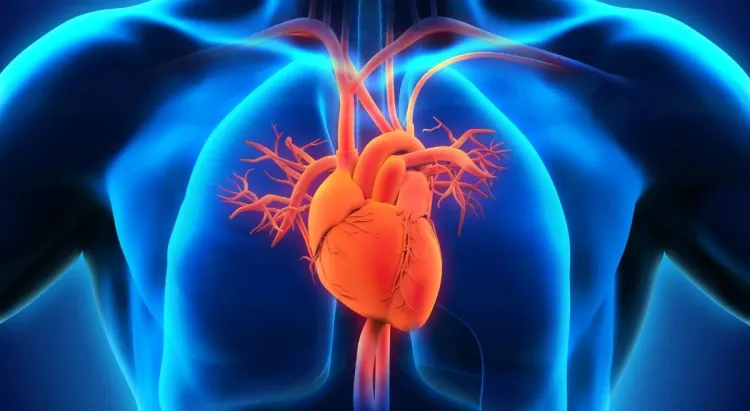The Heart: The Lifeline of the Human Body...!!!
The heart is the lifeline of the human body, a remarkable organ that sustains life through its ceaseless pumping action.

Introduction
The human heart is a marvel of biological engineering, an organ that tirelessly works to sustain life by pumping blood throughout the body. Located in the thoracic cavity, slightly to the left of the midline, the heart is a muscular organ roughly the size of a fist. Its primary function is to circulate blood, delivering oxygen and nutrients to tissues and removing carbon dioxide and other waste products. This essay delves into the anatomy, function, and significance of the heart, as well as the common diseases that can affect it.
Anatomy of the Heart
The heart is divided into four chambers: the left atrium, left ventricle, right atrium, and right ventricle. These chambers are separated by a septum, which ensures that oxygen-rich and oxygen-poor blood do not mix. The heart has four main valves: the mitral valve, tricuspid valve, aortic valve, and pulmonary valve. These valves regulate blood flow and ensure it moves in the right direction.
The heart's outer layer is called the pericardium, a double-walled sac that provides protection and reduces friction between the heart and surrounding structures. The middle layer, the myocardium, consists of cardiac muscle tissue responsible for the heart's pumping action. The inner layer, the endocardium, lines the chambers and valves.
Function of the Heart
The heart functions as a pump, maintaining the continuous flow of blood through the circulatory system. The process begins when deoxygenated blood from the body returns to the right atrium via the superior and inferior vena cava. This blood then flows into the right ventricle, which pumps it to the lungs through the pulmonary arteries. In the lungs, carbon dioxide is exchanged for oxygen, and the now oxygen-rich blood returns to the left atrium via the pulmonary veins. From the left atrium, blood flows into the left ventricle, which then pumps it out to the rest of the body through the aorta.
This entire process, known as the cardiac cycle, occurs approximately 60 to 100 times per minute in a resting adult, translating to around 100,000 heartbeats per day. The heart's electrical conduction system, which includes the sinoatrial (SA) node, atrioventricular (AV) node, and His-Purkinje system, coordinates the timing of these contractions.
Significance of the Heart
The heart is vital for sustaining life, as it ensures the delivery of oxygen and essential nutrients to tissues and organs. Without a properly functioning heart, cells would be deprived of the necessary components to produce energy, leading to organ failure and, ultimately, death. Additionally, the heart plays a crucial role in maintaining homeostasis by regulating blood pressure, temperature, and pH balance.
Common Heart Diseases
Despite its robustness, the heart is susceptible to various diseases that can impair its function. Some of the most common heart diseases include:
-
Coronary Artery Disease (CAD): CAD occurs when the coronary arteries, which supply blood to the heart muscle, become narrowed or blocked due to plaque buildup. This can lead to chest pain (angina), shortness of breath, and heart attacks.
-
Heart Failure: Heart failure occurs when the heart cannot pump blood effectively, leading to a buildup of fluid in the lungs and other tissues. Symptoms include fatigue, shortness of breath, and swelling in the legs and abdomen.
-
Arrhythmias: Arrhythmias are irregular heartbeats caused by issues with the heart's electrical conduction system. They can range from benign (e.g., occasional extra beats) to life-threatening (e.g., ventricular fibrillation).
-
Valvular Heart Disease: This condition involves damage to one or more of the heart valves, leading to improper blood flow. It can result from congenital defects, infections, or age-related changes.
-
Cardiomyopathy: Cardiomyopathy refers to diseases of the heart muscle that can cause it to become enlarged, thickened, or stiff, impairing its ability to pump blood effectively.
-
Congenital Heart Defects: These are structural abnormalities present at birth that can affect the heart's chambers, valves, or blood vessels. Some congenital defects can be mild and asymptomatic, while others may require surgical intervention.
Prevention and Management
Preventing heart disease involves adopting a healthy lifestyle, including a balanced diet, regular exercise, maintaining a healthy weight, and avoiding smoking. Managing stress and controlling underlying conditions like hypertension, diabetes, and high cholesterol are also crucial. For those with existing heart conditions, medication, surgical interventions, and lifestyle modifications can help manage symptoms and improve quality of life.
The heart is the lifeline of the human body, a remarkable organ that sustains life through its ceaseless pumping action. Understanding its anatomy, function, and the diseases that can affect it is essential for maintaining cardiovascular health. By adopting a heart-healthy lifestyle and seeking timely medical care, we can protect this vital organ and enjoy a longer, healthier life.
What's Your Reaction?

















